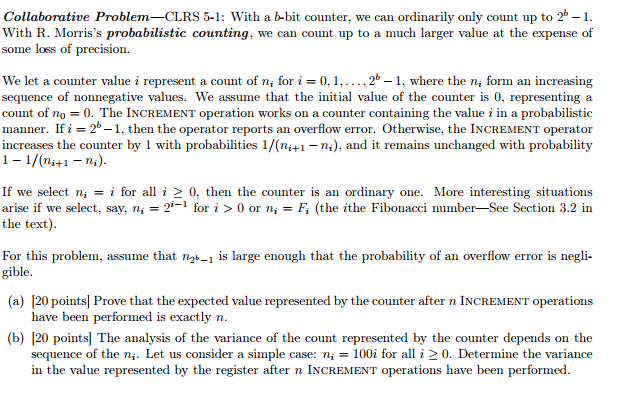Answered step by step
Verified Expert Solution
Question
1 Approved Answer
Collaborative Problem-CLRS 5-1: With a b-bit counter, we can ordinarily only count up to 2b -1. With R. Morris's probabilistic counting, we can count up

Step by Step Solution
There are 3 Steps involved in it
Step: 1

Get Instant Access to Expert-Tailored Solutions
See step-by-step solutions with expert insights and AI powered tools for academic success
Step: 2

Step: 3

Ace Your Homework with AI
Get the answers you need in no time with our AI-driven, step-by-step assistance
Get Started


